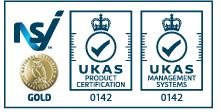
As of January, last year, new regulations were introduced in England for smoke detector requirements for residential buildings. This has affected tenancies both new and existing. It meant that landlords had to provide and install smoke alarms into every floor of the properties they owned. Our residential fire safety specialists helped a lot of landlords with this.
While the new legislations came into play at the beginning of last year for all new tenancies and April last year for existing tenancies, some landlords may have missed it. So, in this blog post we look at the smoke detector requirements for residential buildings. We go into details of what you need to know, what the changes are and what you need to do.
What Are The Smoke Detector Regulations For Residential Buildings?
The UK Building Regulations ask that smoke detectors are install in all new residential buildings. It is also a requirement that smoke detectors are installed in converted residential buildings too.
When it comes to existing residential buildings, the requirements do vary. This is dependent on the type of building and the size of the building. For example, in a single-family dwelling smoke detectors must be installed in all circulation spaces. They may also be installed in any rom where a fire could start. This would include a kitchen, for example.
However, in a flat, for example, smoke detectors must be installed in the hallway, living room or lounge of each dwelling. This is the same for apartments as well as flats.
The number of smoke detectors and where they are located depends on the layout of the property. It also depends on the potential fire risk within the residential building. Generally speaking, if a residential property has multiple floors the smoke detector regulations are for one on each floor. If there are multiple rooms on a single floor, additional smoke detectors may be required too.
In addition, smoke detectors within apartment blocks must be interlinked. This means that if one smoke alarm detects a fire, it alerts the other smoke alarms in the building. The alarm will sound on all connected detectors. This will ensure that all occupants are alerted to the danger of the fire. This will even be possible if the occupants are not in the i9mmediate vicinity of the fire.

